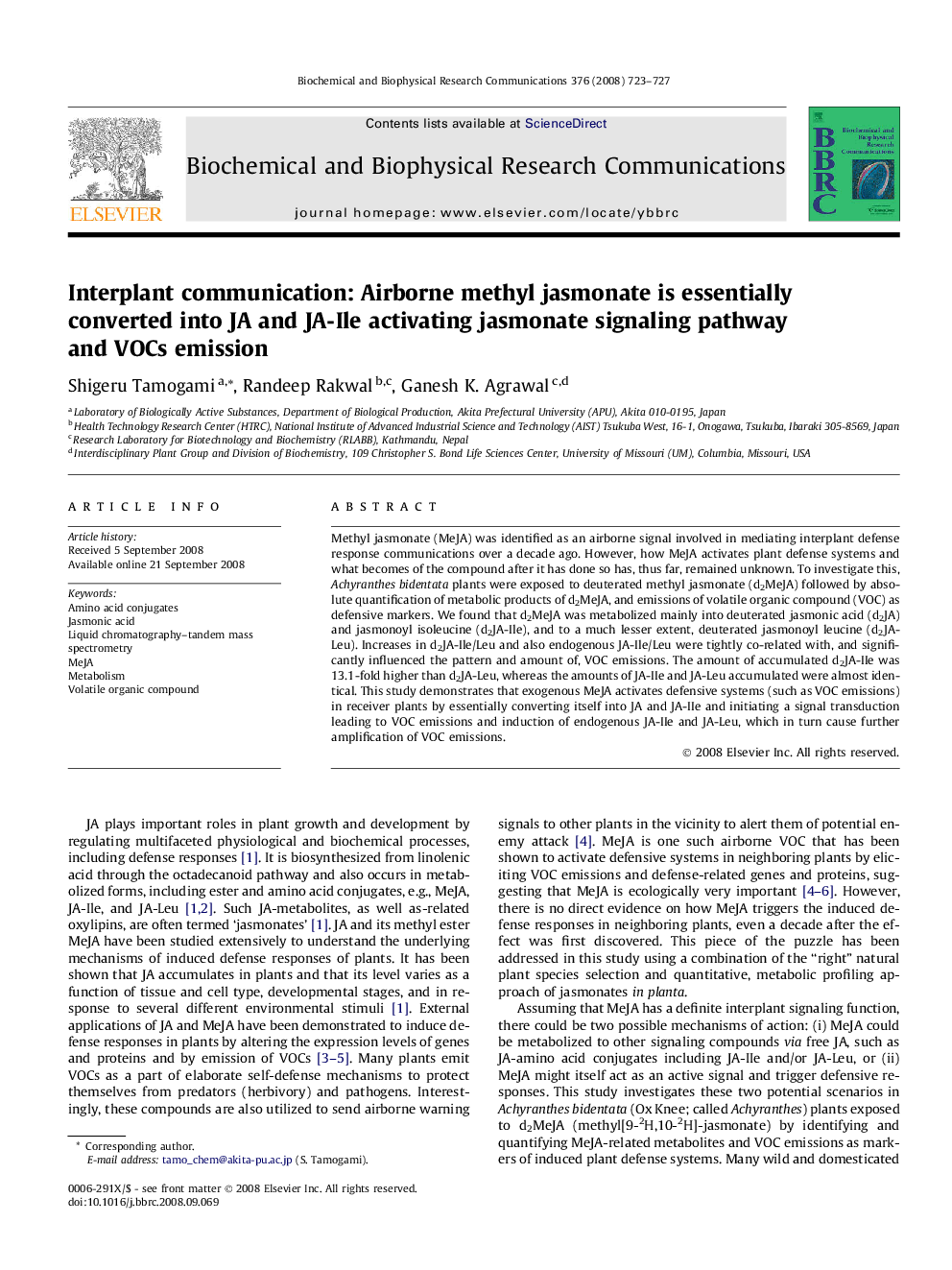| Article ID | Journal | Published Year | Pages | File Type |
|---|---|---|---|---|
| 1934427 | Biochemical and Biophysical Research Communications | 2008 | 5 Pages |
Abstract
Methyl jasmonate (MeJA) was identified as an airborne signal involved in mediating interplant defense response communications over a decade ago. However, how MeJA activates plant defense systems and what becomes of the compound after it has done so has, thus far, remained unknown. To investigate this, Achyranthes bidentata plants were exposed to deuterated methyl jasmonate (d2MeJA) followed by absolute quantification of metabolic products of d2MeJA, and emissions of volatile organic compound (VOC) as defensive markers. We found that d2MeJA was metabolized mainly into deuterated jasmonic acid (d2JA) and jasmonoyl isoleucine (d2JA-Ile), and to a much lesser extent, deuterated jasmonoyl leucine (d2JA-Leu). Increases in d2JA-Ile/Leu and also endogenous JA-Ile/Leu were tightly co-related with, and significantly influenced the pattern and amount of, VOC emissions. The amount of accumulated d2JA-IIe was 13.1-fold higher than d2JA-Leu, whereas the amounts of JA-IIe and JA-Leu accumulated were almost identical. This study demonstrates that exogenous MeJA activates defensive systems (such as VOC emissions) in receiver plants by essentially converting itself into JA and JA-IIe and initiating a signal transduction leading to VOC emissions and induction of endogenous JA-IIe and JA-Leu, which in turn cause further amplification of VOC emissions.
Keywords
Related Topics
Life Sciences
Biochemistry, Genetics and Molecular Biology
Biochemistry
Authors
Shigeru Tamogami, Randeep Rakwal, Ganesh K. Agrawal,
